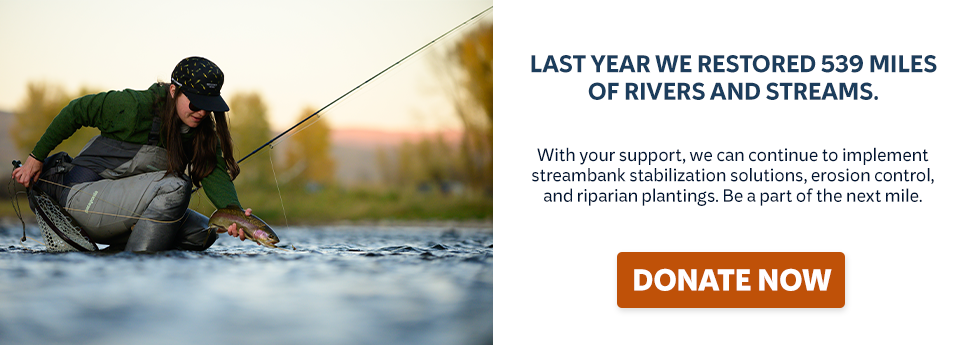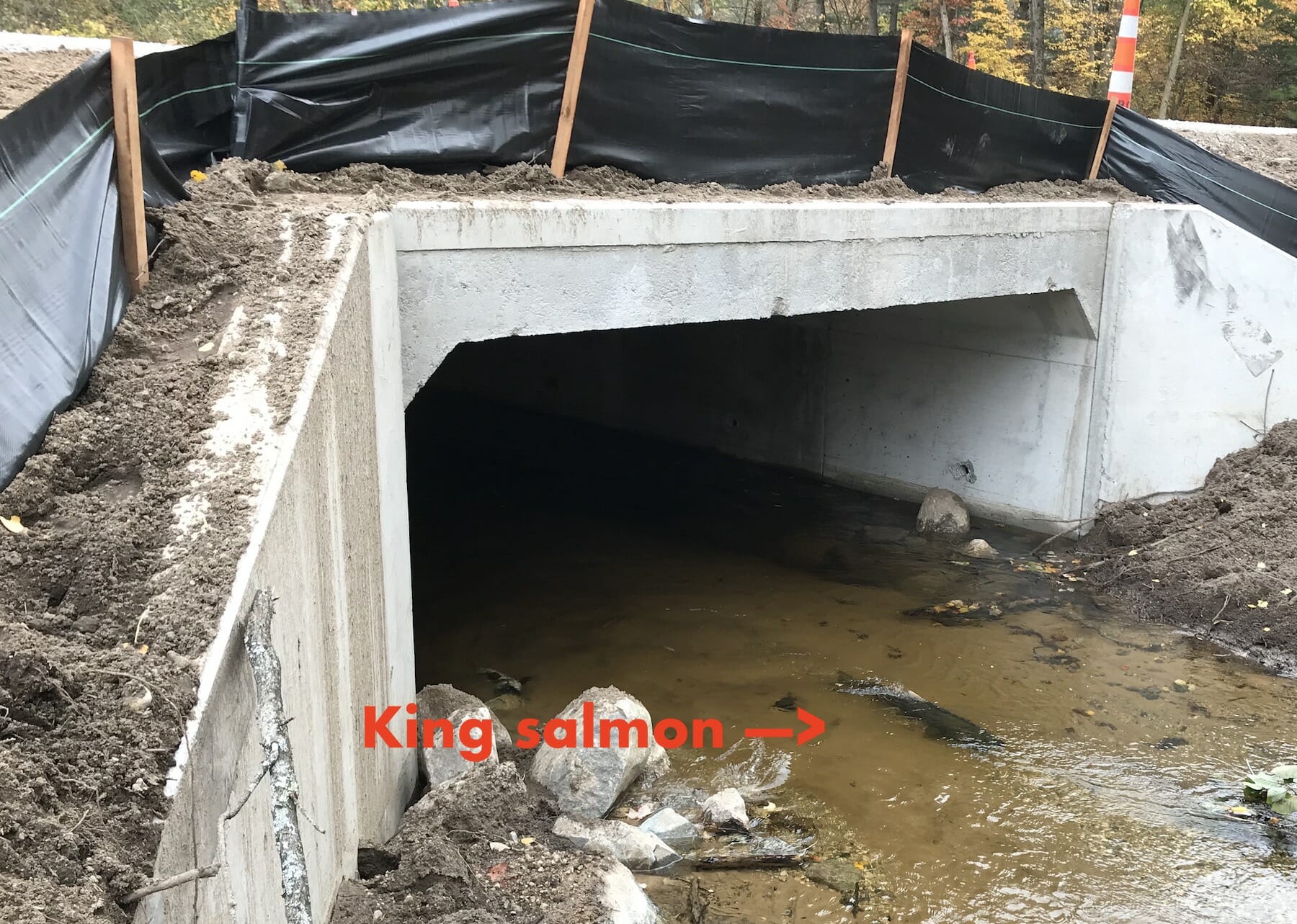By Chad Kotke
I am a fairly new employee to Trout Unlimited but my heart has been with TU since my childhood.
My father wrote articles for the original Trout Magazine and he even still sports his original TU coffee mug, which he received as payment.
My most recent job prior to coming to TU was with the Michigan Department of Environment, Great Lakes, and Energy, Water Resources Division for 15 years.
I worked with a small group of stream specialists to review and create policies that were beneficial to stream and river function.
One of these functions was to look at increasing the standard for road stream crossings for flood conveyance for safety measures on infrastructure. While I knew increasing the size of a road crossing is always better for lowering flood flows, it is also incredibly beneficial to not just fish but also terrestrial species that use river corridors to migrate.
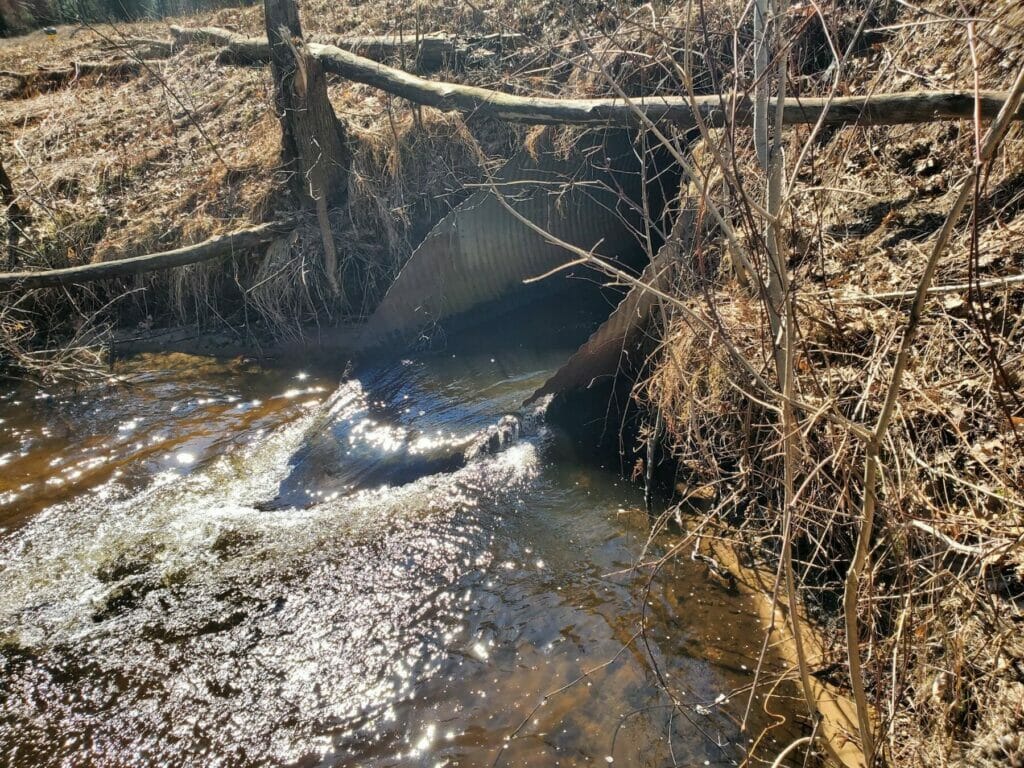
Having been with TU for little over a year, I have been pleased to see how our Great Lakes team in Wisconsin and Michigan has worked incredibly hard at taking these policy shifts at a state level and implementing them on the ground. Recently I even got to see the immediate benefit of one project — in the form of king salmon taking advantage of previously unreachable spawning habitat.
The Great Lakes TU team recently placed larger crossings in Wisconsin and Michigan to open countless miles of spawning habitat for native brook trout and naturalized brown trout, steelhead, and salmon.
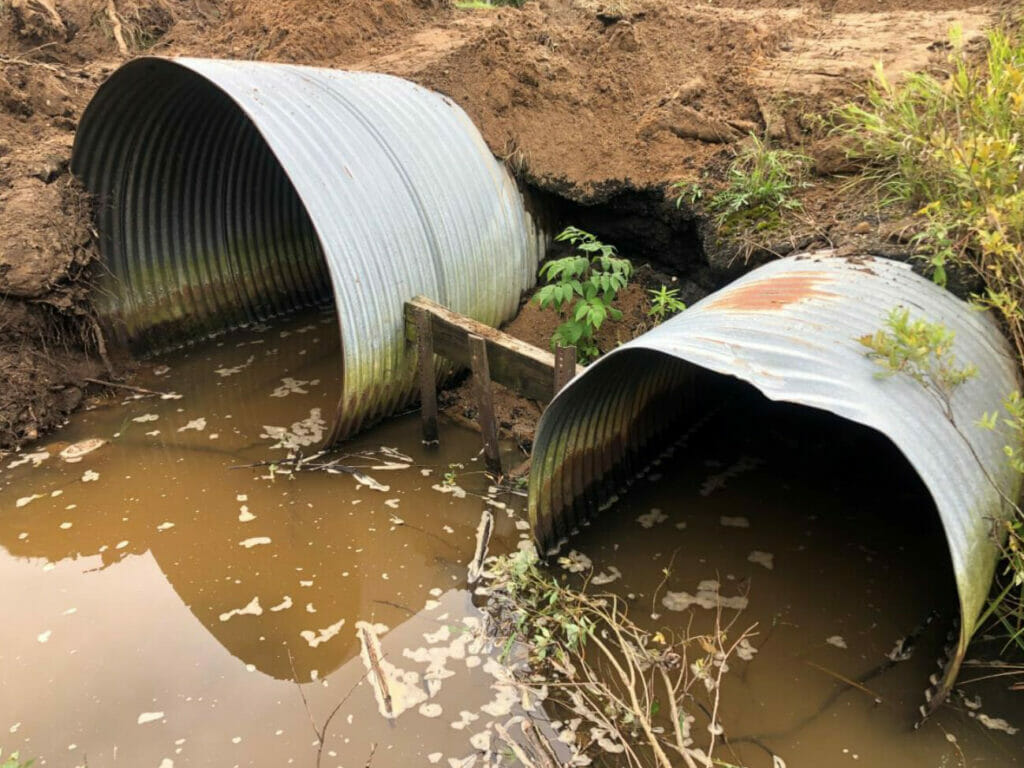
On a recent job we up-sized two road crossings on Bigelow Creek, part of the Muskegon River watershed in Michigan. These culverts were a quarter the width they needed to be, which increased the velocity within the pipe to speeds not passible by any fish species. Terrestrial animals could not access these culverts, either.
In the early fall of 2020, TU’s Great Lakes team, in partnership with the Huron-Manistee National Forest and the Newaygo County Road Commission, replaced two existing 2-foot culverts at one site with a 15-foot span concrete culvert. We also replaced an existing 6-foot culvert at a different location with a 15-foot span concrete culvert on Bigelow Creek. (Click here to see an ArcGIS StoryMap featuring the work in the watershed.)
These crossings are put in place much lower than the bed of the river and then a stream channel is built inside to match the upstream and downstream channel dimensions.
This not only replicates the stream’s natural flow conditions during most low flow conditions, it also matches the stream’s natural flow conditions at most flood conditions as well.
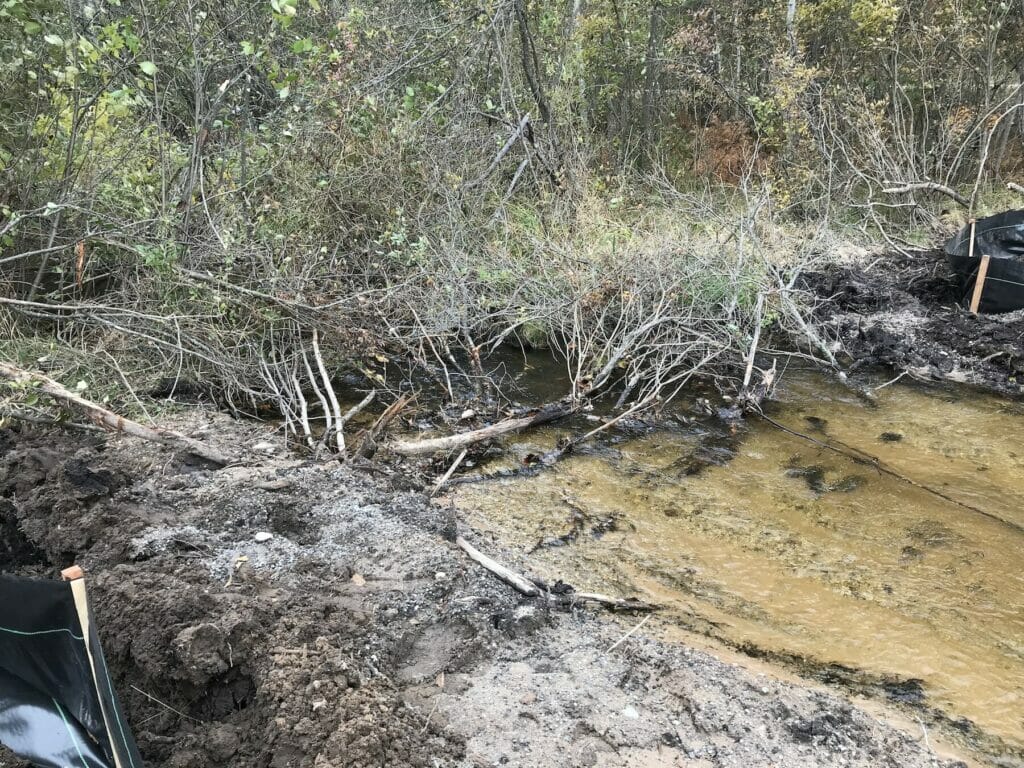
This now allows for slow-moving insects such as caddis and mayfly to move up and down stream. It also provides a corridor for land animals such as mink, deer, racoons and, most importantly, beavers.
Beavers are drawn to the sound of rushing water and undersized culverts act as a Siren song for them. They build their structures at these constrictions to impede water and ultimately cause the crossing to fail unless they are under constant maintenance.
By creating these larger structures beavers will no longer be a maintenance nightmare for road commissions or endanger locals by causing these important infrastructure crossings to wash out.
Upon installing these crossings, it was easy to see success. Immediately, king salmon began passing through on their way to spawning areas that were previously not accessible.
The spawning process will not only provide future generations of salmon, but the decaying carcasses of the spawned-out salmon will provide important nutrients to the stream, helping to further expand the range of brook trout within the watershed.

